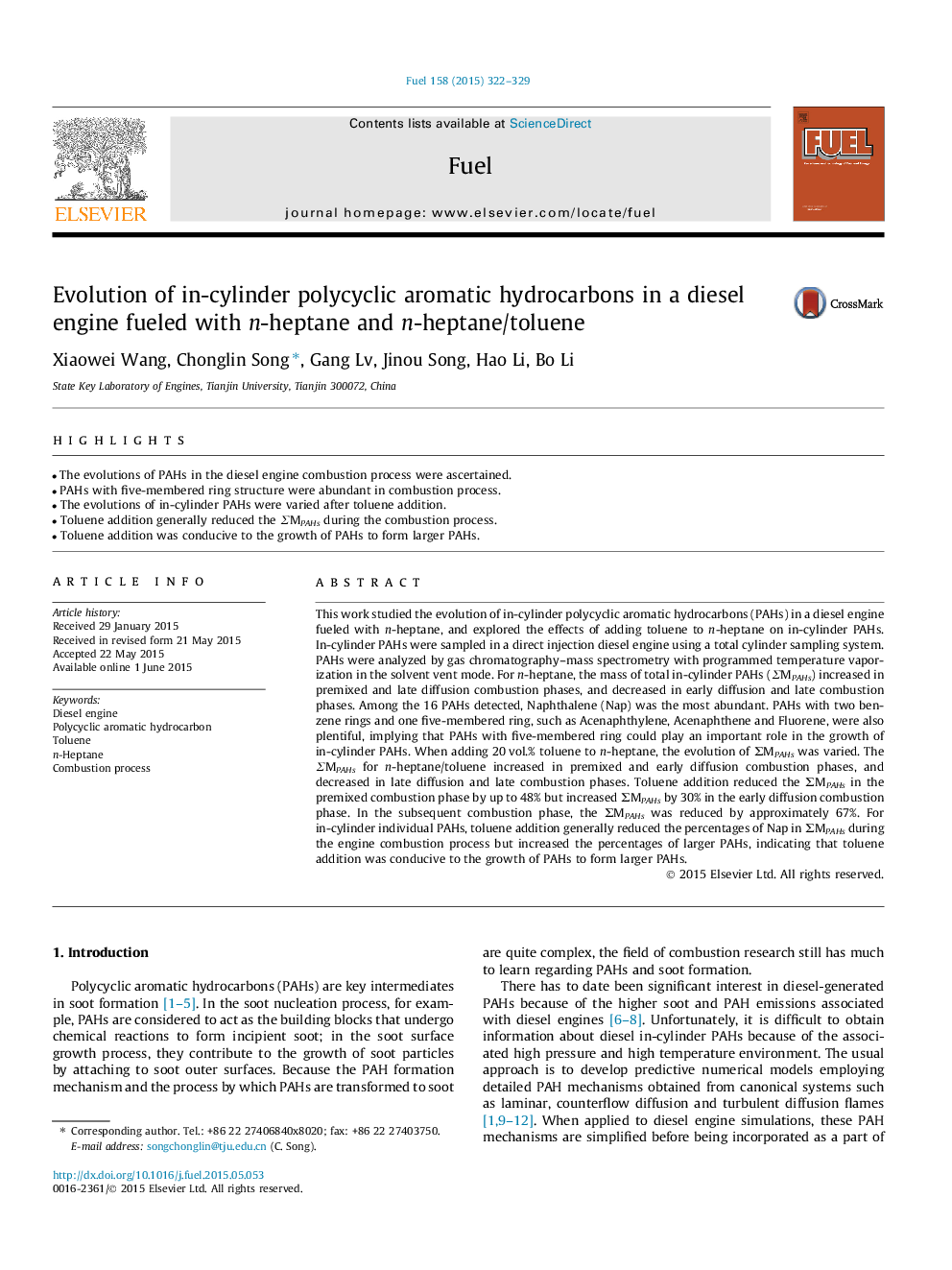| Article ID | Journal | Published Year | Pages | File Type |
|---|---|---|---|---|
| 6634966 | Fuel | 2015 | 8 Pages |
Abstract
This work studied the evolution of in-cylinder polycyclic aromatic hydrocarbons (PAHs) in a diesel engine fueled with n-heptane, and explored the effects of adding toluene to n-heptane on in-cylinder PAHs. In-cylinder PAHs were sampled in a direct injection diesel engine using a total cylinder sampling system. PAHs were analyzed by gas chromatography-mass spectrometry with programmed temperature vaporization in the solvent vent mode. For n-heptane, the mass of total in-cylinder PAHs (ΣMPAHs) increased in premixed and late diffusion combustion phases, and decreased in early diffusion and late combustion phases. Among the 16 PAHs detected, Naphthalene (Nap) was the most abundant. PAHs with two benzene rings and one five-membered ring, such as Acenaphthylene, Acenaphthene and Fluorene, were also plentiful, implying that PAHs with five-membered ring could play an important role in the growth of in-cylinder PAHs. When adding 20 vol.% toluene to n-heptane, the evolution of ΣMPAHs was varied. The ΣMPAHs for n-heptane/toluene increased in premixed and early diffusion combustion phases, and decreased in late diffusion and late combustion phases. Toluene addition reduced the ΣMPAHs in the premixed combustion phase by up to 48% but increased ΣMPAHs by 30% in the early diffusion combustion phase. In the subsequent combustion phase, the ΣMPAHs was reduced by approximately 67%. For in-cylinder individual PAHs, toluene addition generally reduced the percentages of Nap in ΣMPAHs during the engine combustion process but increased the percentages of larger PAHs, indicating that toluene addition was conducive to the growth of PAHs to form larger PAHs.
Related Topics
Physical Sciences and Engineering
Chemical Engineering
Chemical Engineering (General)
Authors
Xiaowei Wang, Chonglin Song, Gang Lv, Jinou Song, Hao Li, Bo Li,
